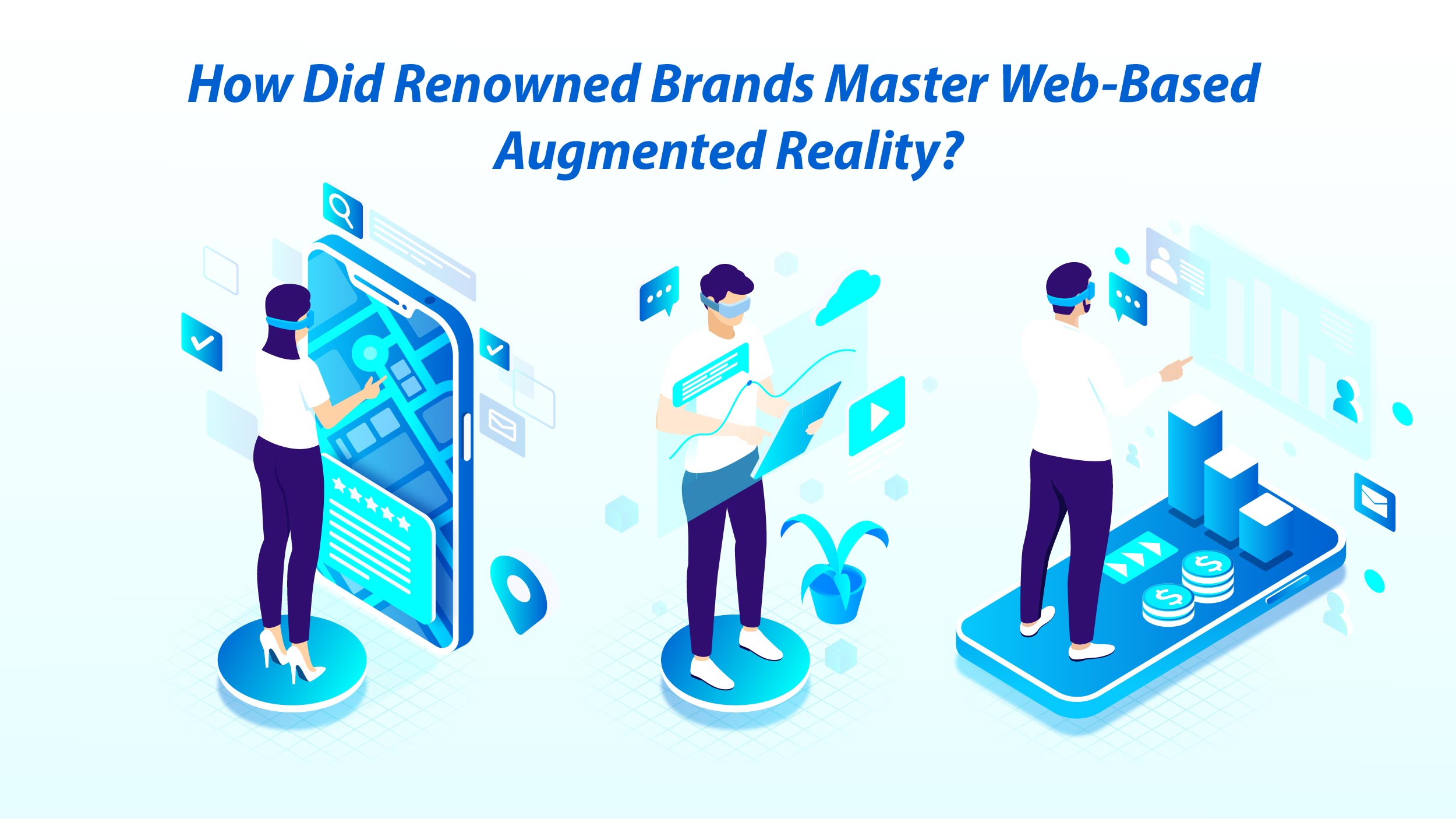While not new, both Artificial Reality (AR) and Virtual Reality (VR) technologies have been around for over a decade, with emerging commercial applications. Despite not reaching the anticipated hype, these technologies have made a significant impact, evident in AR trends like live view in Google Maps and games such as Pokémon GO. VR has transformed communication and media interaction and continues to evolve for various applications, serving as a gateway to virtual worlds. Microsoft HoloLens stands as a notable example of the capabilities of VR and AR. Now, let’s delve deeper into the concept of WebAR in this article.
What is WebAR?
WebAR, short for Web-based Augmented Reality, delivers AR experiences directly through a web browser, primarily targeting mobile devices, but are also accessible on desktop browsers. The beauty of WebAR lies in its simplicity—you don’t need any special hardware or software. A simple link to a designated webpage provides the web-based augmented reality experience, eliminating the need for app downloads or specialized devices.
With a fast and reliable internet connection, it offers accessibility surpassing that of VR and AR. Some companies, such as Google, refer to this concept as “WebXR”, which enables browsers like Chrome to deliver immersive AR and VR experiences directly through the browser. Some popular WebAR platforms include 8th Wall, Zappar, AWE, Blippar, Geenee, and Threekit. Developers can utilize webAR frameworks as tools and libraries to create augmented reality experiences on the web. These frameworks offer a base and a feature set that make development easier and make it possible to incorporate augmented reality (AR) components into web apps.
How Does WebAR Work?
WebAR operates by utilizing a mobile phone’s sensors to integrate and track digital content within the physical environment. Leveraging sensors & computer vision, AR technology enables the delivery of animated 3D experiences, target detection, videos, and interactive elements.
The complexity and richness of web-based augmented reality experiences are anticipated to expand further as mobile browsers incorporate additional support features. This includes enabling AR to utilize the device’s RGB camera, orientation, accelerometer, gyroscope, and magnetometer.
Most WebAR experiences typically incorporate four essential features:
- Six Degrees of Freedom: Providing freedom of movement in all directions.
- Camera Stream: Utilizing the device’s camera to stream real-time visuals.
- Scene Understanding: Enhancing comprehension of the physical environment.
- Cloud-Based CMS: Leveraging cloud-based content management systems (CMSs) for efficient content delivery and updates.
Also Read: Why is Human-Computer Interaction Crucial in Today’s Technological Era?
How Did Renowned Brands Master Web-Based Augmented Reality?
 Some recent examples of applications of WebAR by prominent companies are as follows:
Some recent examples of applications of WebAR by prominent companies are as follows:
- Saatchi Art: The online art store implemented web-based augmented reality on its website, enabling users to visualize artwork on their walls without the need for app installations.
- Haribo: This popular candy brand crafted a unique adventure using web-based augmented reality, captivating users with a virtual scavenger hunt experience.
- Siwas Energy Drink: Collaborating with WE/AR Studio, Siwas Energy Drink created an immersive experience, allowing customers to explore different AR dimensions and interact with virtual elements.
- Nestle Argentina: Utilizing web-based augmented reality to enhance customer engagement for Nesquik’s 60th anniversary, Nestle Argentina provided users with various face filters to choose from and share on social media. This interactive approach added a celebratory dimension to the experience.
Applications of WebAR
Applications of web-based augmented reality are diverse, with numerous practical implementations across various industries. Companies, especially in e-commerce, leverage this technology to showcase product features effectively, offering potential buyers a virtual experience without the need for physical showrooms or direct consultations. Industries like clothing, jewelry, and beauty have successfully utilized augmented reality to enhance sales by allowing customers to virtually view and test products in 3D, which has increased conversion rates.
Moreover, this innovative technology has found a valuable place in education, elevating the learning process. Students can access interactive content, such as world maps or 3D images, simply by following a link or scanning a QR code. This immersive approach enhances engagement and comprehension.
For professionals like interior designers, furniture producers, and home accessories manufacturers, web-based augmented reality becomes a visual tool to showcase envisioned changes in customers’ homes, adding an interactive dimension to the decision-making process.
The effectiveness of web-based augmented reality in advertising is highlighted by a survey indicating that 74% of users find AR ads more attention-grabbing, as per the Ericsson Emodo Primary Survey Research Study. This underscores the technology’s potential to captivate audiences and drive marketing success.
What Are The Various Activation Methods Compatible With Web-based Augmented Reality?
 QR Codes: Scan the QR code with your phone’s camera to access the AR webpage.
QR Codes: Scan the QR code with your phone’s camera to access the AR webpage.- Short Links: Use the provided short URL alongside the QR code for easy webpage access.
- Direct Links: Embed a direct link in social media, emails, or websites for convenient access.
- NFC Chips: Embed NFC chips in printed materials for phone-tap activation.
- SMS Messaging: Send a direct link via SMS for instant experience activation.
- Social Media Channels: Share direct links on platforms like Facebook, Instagram, LinkedIn, Twitter, and Snapchat.
- Television Advertising: Display QR codes in TV ads for remote experience activation.
- Banner Ads: Activate AR experiences directly from banner ads for a complete advertising journey.
Wrapping Up
WebAR transforms user interaction with augmented reality content, enabling direct access through web browsers, eliminating the need for separate applications, and enhancing accessibility. The promising future of this technology is propelled by technological advancements and widespread adoption across domains. As web browsers evolve, web-based augmented reality experiences are poised to become increasingly seamless and immersive.

































